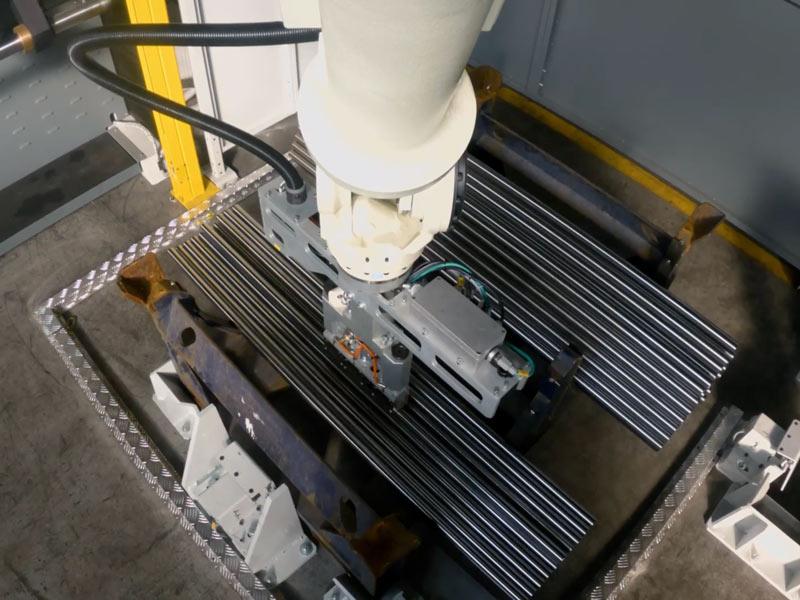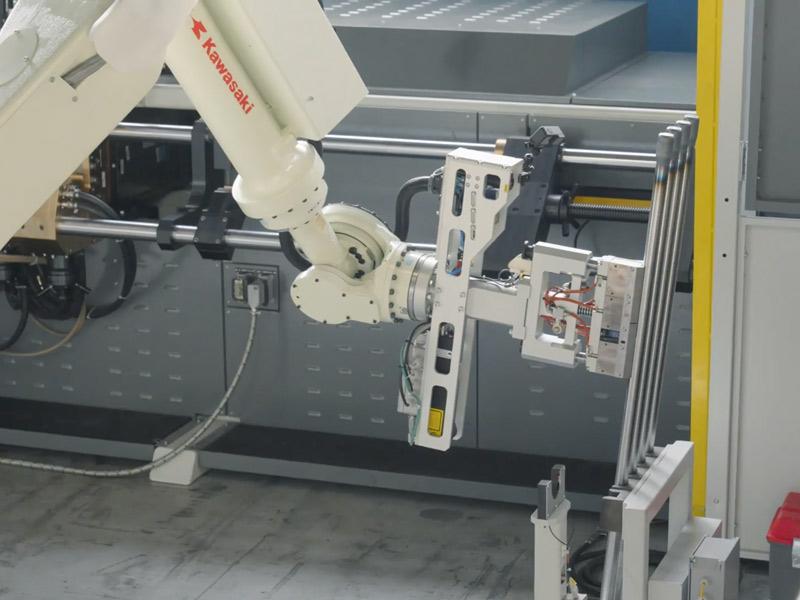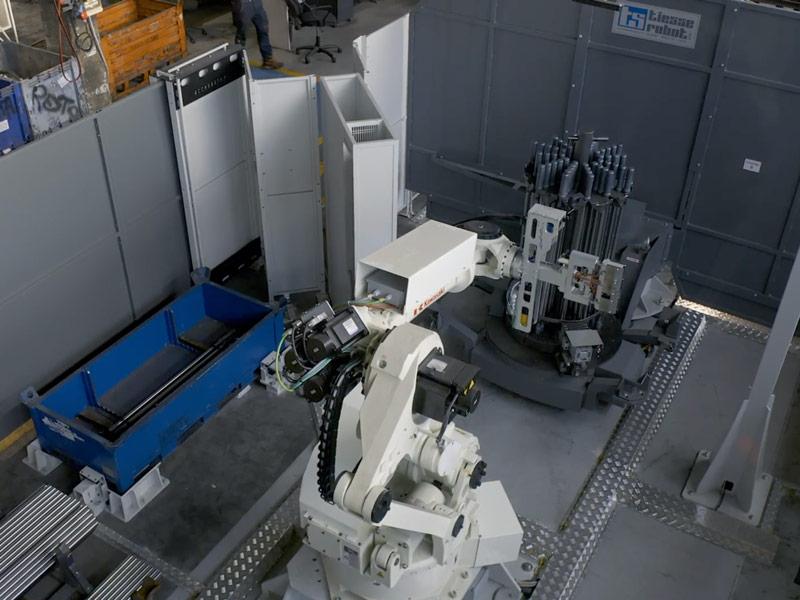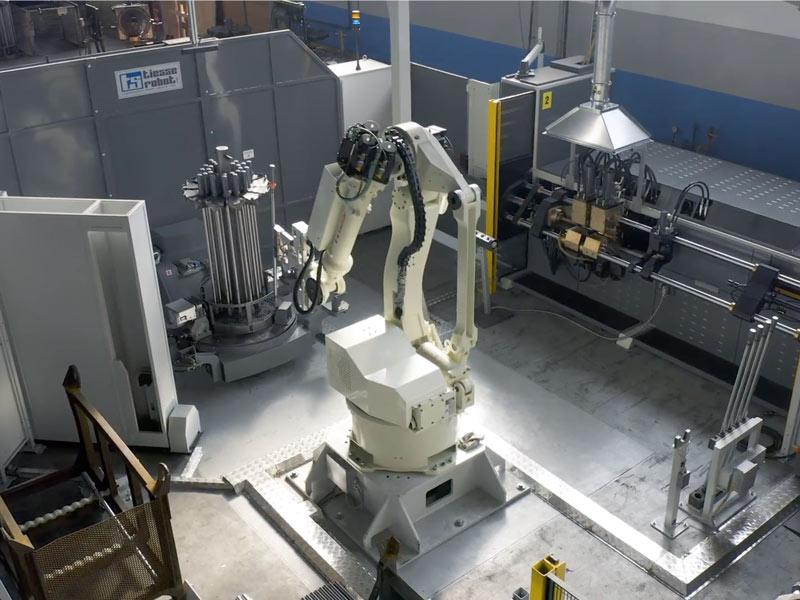Streparava- Kawasaki robots for process optimisation
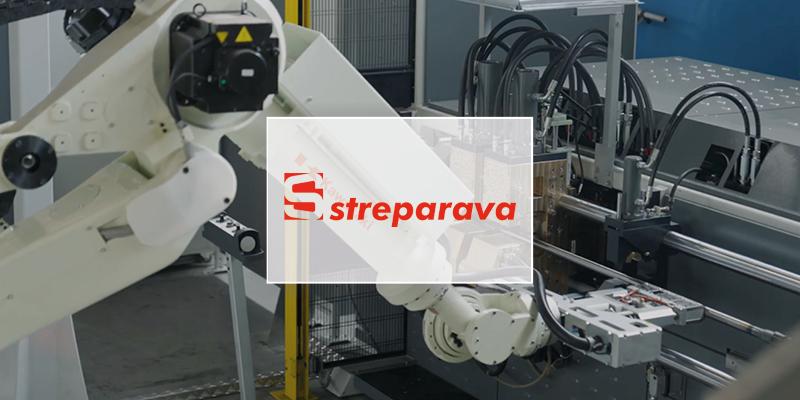
GOAL
To increase competitiveness and relieve operators from ergonomically demanding and low value-added handling tasks.
ROBOT
Kawasaki ZX165U robot
DETAILS
TS VISION vision system.
The Streparava group was founded in 1951 with the production of screws and bolts for third parties and over the years has considerably expanded its expertise in various metalworking processes. Today it is a leading supplier of complex components and systems in the automotive sector, producing independent front suspensions for commercial vehicles and buses as well as powertrain components for motorbikes, cars and industrial vehicles.
Streparava is a partner of the most important OEMs in the Automotive sector and is present on 3 continents with 7 production plants, 4 of which are in Italy as well as in Spain, India and Brazil, and more than 1200 employees. In 2022, it has exceeded the € 300 million turnover threshold.
Strengthened by the values of team spirit, well-being and challenge, the Group has always maintained a particular focus on optimizing production processes in order to increase its competitiveness but with a careful eye on the health and safety conditions of its workers.
In the video, Gian Antonio Riello, Chassis Division Manager at Streparava.
"Our Group has found in Tiesse Robot a valid partner with whom it collaborates on automation projects that reflect these conditions.
This collaboration has resulted in 12 automated cells to date, distributed between the Italian and Brazilian plants, to which eight more will be added by the end of 2023.
One of these is the electromachining plant for torsion bars, which uses a Kawasaki ZX165U robot equipped with an advanced system that combines a laser profiler with the vision system designed and developed by Tiesse Robot, the TS VISION."
TS VISION makes the Kawasaki robot capable of picking up steel bars, which are highly reflective, serving the re-shaping machines and filling the baskets, which then go on to the shot peening and heat treatment operations.
The plant fully achieves its objectives:
- increase productivity
- at the same time, relieving operators of ergonomically demanding and low value-added handling tasks.
With this type of application, it was possible to use the existing baskets which, when subjected to the aggressiveness of heat treatment, end up being deformed and required the development of a customized and extremely advanced automated plant. TS VISION is able to identify the actual geometry of the basket and adapt the robot's movements accordingly when positioning the bar inside it without making mistakes.
Considering that the plant produces many more bars than required, it is possible to use the robot's idle hours to unload the baskets from the post blast bars by loading the basket on the unloading station and activating the emptying program.
The vision system identifies the top plane of the baskets, recognises the presence of the bars and indicates to the robot the position and sequence of pick-up.
The bars removed from the baskets are placed on the bins, which are then used to feed the bar processing island.
How the automated plant works
In the workpiece entry station, the existing cradles are used, so that the operator is no longer required to handle the bars, which he can unload directly with the forklift.
A barcode reader acquires the data contained on the part bundle identification label and records - via the supervisor - the date and time of the start/end of machining as well as any sample parts requested by the operator.
The Kawasaki ZX165U robot, equipped with a gripping device with laser profilometer and magnetic gripper, positions itself above the caisson and takes the reading.
Using the software developed by Tiesse Robot, the TS VISION, the stack profile is digitally reconstructed and the robot is told which bar to pick up by means of a gripper equipped with three magnets. After the bar has been picked, the robot uses a special photocell to check and restore the 'Zero Position' of the bar in real time, and then proceeds to feed the machines that make up the island.
Once the first operation has been completed, the robot positions the bar being processed in a waiting station where it remains for 5 minutes before being inserted into the second machine for the final reworking. Once the final upsetting is complete, the Kawasaki robot removes the bar from the upsetting machine and proceeds to the exit station.
At the exit station, either the existing baskets or the shot-blasting loading bins can be used at will, thus avoiding an additional step for the operator who no longer handles the bars.
This is possible thanks to the vision system with two cameras that guides the Kawasaki ZX165U robot to identify both the upper and lower levels of the basket. It adapts the path the robot takes to deposit the bars in the basket.
Take the first step and contact us!
